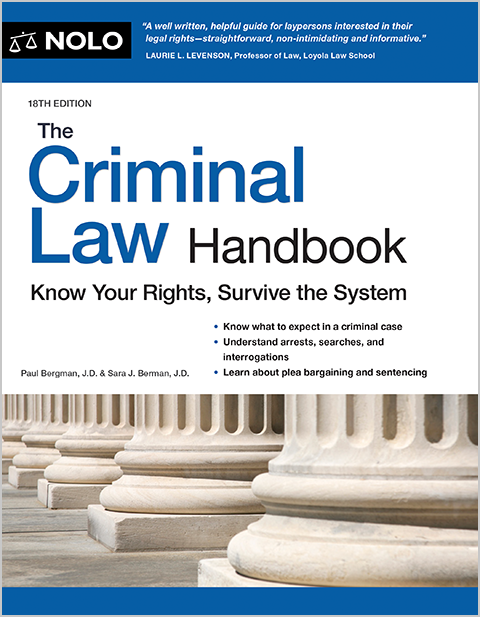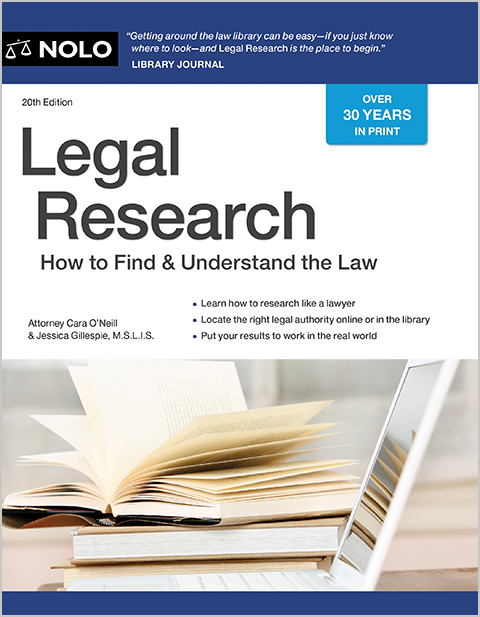How judges determine the punishment for people convicted of crimes.
Criminal sentencing can be complex. Criminal laws (often compiled in "Penal Codes") typically specify a maximum sentence for a crime. But that maximum sentence is rarely the sentence imposed. Many factors come into play when judges determine the appropriate punishment for a particular crime. Figuring out the possible sentence for a crime can be tricky. Here are answers to common sentencing questions, but your best source of information is a criminal defense attorney.
- Where can the prescribed punishment for crimes be found?
- Do people convicted of the same or similar crimes receive similar sentences?
- What factors do judges use in determining sentences?
- Can my attorney ask for an alternative sentence?
- Can my attorney "plea bargain" with the prosecutor?
- Who determines what punishment a convicted defendant receives?
Where can the prescribed punishment for crimes be found?
Sometimes the law a defendant is charged with violating identifies the punishment. For example, a statute prohibiting petty theft might define it as a misdemeanor "punishable by imprisonment in the county jail not exceeding six months, or by fine not exceeding $1,000, or by both."
Other laws might describe a particular behavior as a misdemeanor or felony without specifying the punishment. In this situation, the punishment can be found in a separate statute that sets forth the punishment either for that particular crime or category of crimes (for example, all misdemeanors).
However, knowing the maximum exposure is only the first step. The actual sentence imposed on a defendant often varies according to the defendant's background and the factual circumstances of a particular case. If you want to find out what your punishment is likely to be if you're convicted, you might take the following steps:
- Talk to a private defense attorney. Some private attorneys offer free consultations or charge an hourly fee for their time.
- If you can't afford to hire a private attorney, ask for a public defender to be appointed to represent you.
- Go to your local law library and do some research. You might also be able to find credible information on the internet. Many states post their codes online and many local courts have self-help centers with free resources. Be wary of attorney websites. These websites are essentially ads and may be inaccurate or outdated.
Do people convicted of the same or similar crimes receive similar sentences?
Some states have statutes with mandatory sentences. A mandatory sentence limits the judge's discretion in setting punishment. Mandatory sentencing laws express some lawmakers' intent to end judicial leniency and treat all people who break the same law the same. For many years, federal law imposed mandatory minimum sentences but judges use these rules more like guidelines now.
More commonly, criminal statutes state only the maximum possible sentence. Judges consider many factors when deciding on an appropriate punishment, including:
- the defendant's past criminal record, age, and sophistication
- the circumstances under which the crime was committed, and
- whether the defendant expresses remorse.
What factors do judges use in determining sentences?
If the judge has the discretion to determine the sentence, the defense will usually argue for a light sentence by highlighting what are called "mitigating factors." Examples of "mitigating" factors include:
- the offender has little or no history of criminal conduct
- the offender was an accessory to the crime (helped the main offender) but was not the main actor
- the offender committed the crime when under great personal stress—for example, after losing a job, being late on rent, and having just been in a car wreck
- the offender was a young adult at the time of the offense and was pressured by older peers, or
- the offender didn't hurt anyone in the crime, and the crime was committed in a manner that was unlikely to have hurt anyone.
Just as mitigating circumstances can sway a judge to lessen a sentence, "aggravating" circumstances can compel a judge to "throw the book at" an offender. A previous record of committing the same type of offense is a common aggravating factor. Other aggravating circumstances grow out of the way a crime was committed, such as when an offender is particularly cruel to a victim. Sometimes, the law specifies aggravating factors, such as the use of a weapon.
Can my attorney ask for an alternative sentence?
Yes, even if the maximum sentence for an offense is jail or prison, defendants routinely argue for some combination of alternatives such as:
- a suspended sentence
- probation
- restitution (victim compensation), and
- community service.
Some defendants (usually first-time offenders charged with non-violent crimes) may qualify for diversion programs.
Can my attorney "plea bargain" with the prosecutor?
According to the American Bar Association, plea bargaining accounts for almost 98% of federal convictions and 95% of state convictions in the United States.
A plea bargain is an agreement between the defense and prosecution. Defendants agree to give up their right to a jury trial in exchange for some kind of reduced punishment. Most commonly, prosecutors agree to drop one or more charges, reduce a charge to a less serious offense, or recommend to the judge a specific sentence acceptable to the defense.
Plea bargaining negotiations typically happen between the prosecutor and defense attorney outside of court. But as a case marches toward trial, a judge may join the conversation and even facilitate negotiations in the judge's chambers (office). Ultimately, a judge must accept or reject whatever plea bargain the parties reach.
Who determines what punishment a convicted defendant receives?
Judges, not juries, almost always determine a defendant's punishment, even following a jury trial. In fact, a common jury instruction warns jurors not to consider the question of punishment when deciding whether the government has proved its case beyond a reasonable doubt.
In rare situations, juries do take part in sentencing decisions—for example, in capital punishment cases, juries are typically left with the decision as to whether the death penalty is appropriate.
When a statute sets out factual circumstances that can produce a harsher sentence (for example, the use of a weapon in the commission of a crime), a judge can't impose the harsher punishment unless the jury concludes beyond a reasonable doubt that the circumstances were present.
- Where can the prescribed punishment for crimes be found?
- Do people convicted of the same or similar crimes receive similar sentences?
- What factors do judges use in determining sentences?
- Can my attorney ask for an alternative sentence?
- Can my attorney "plea bargain" with the prosecutor?
- Who determines what punishment a convicted defendant receives?

